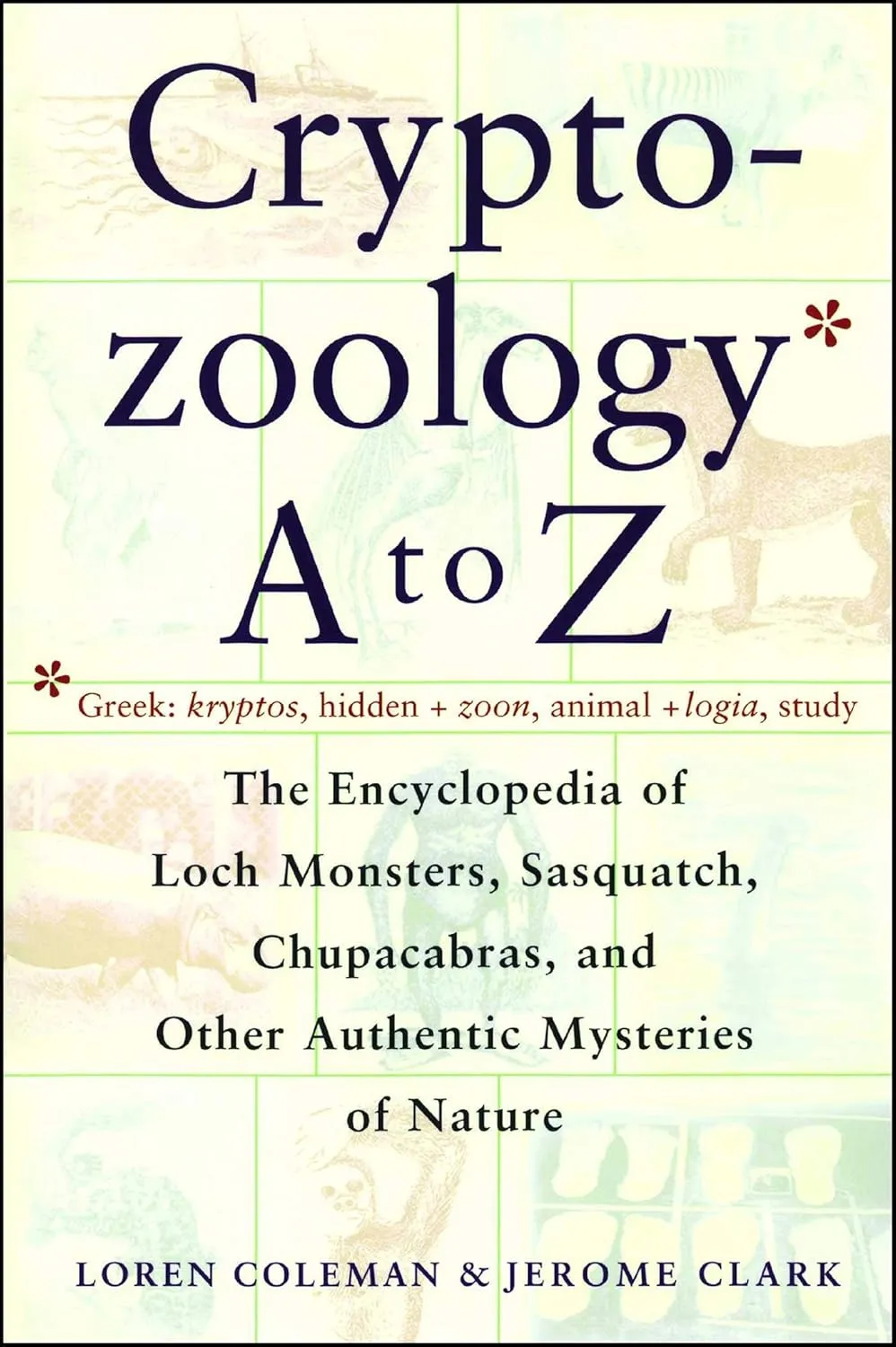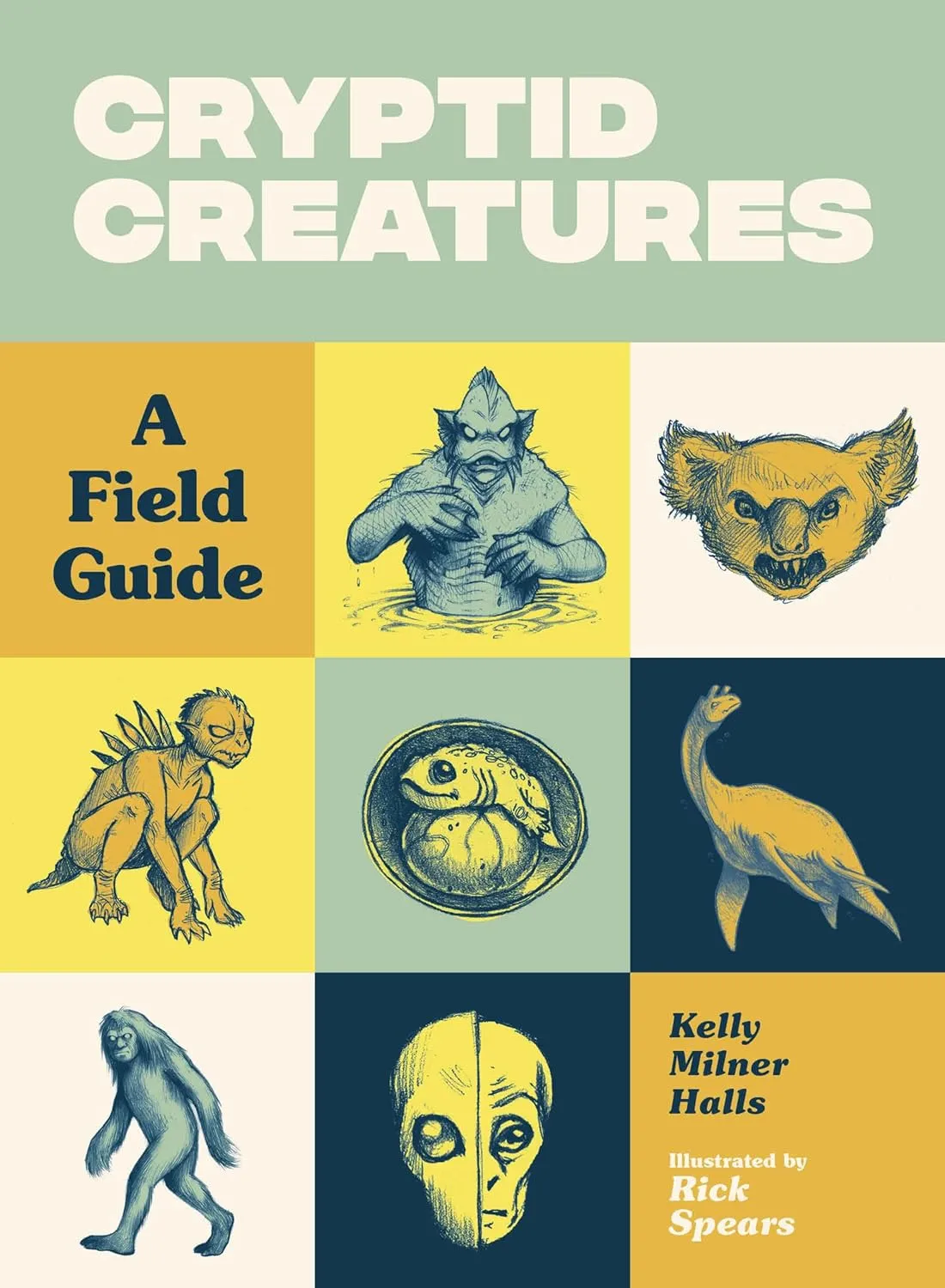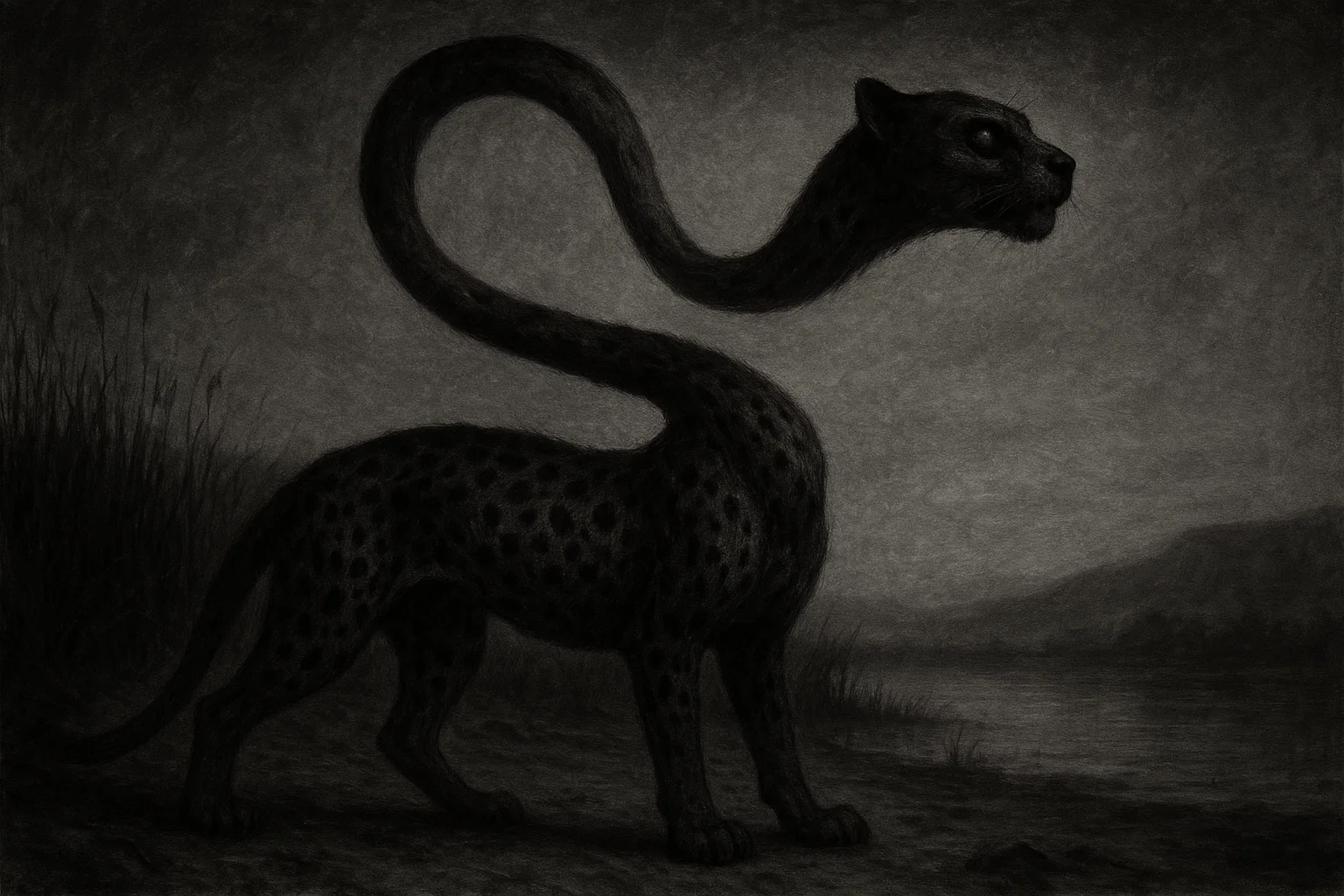The Lizard Man of Lee County, also known as the Lizard Man of Scape Ore Swamp, is a cryptid alleged to inhabit the swamplands of Lee County, South Carolina, near Bishopville.
The creature first gained notable attention in the summer of 1988 following reports of a direct encounter and vehicular damage. The incident sparked a brief but intense media frenzy, establishing the Lizard Man as a prominent figure in South Carolina folklore and cryptozoology.
Summary
Overview
| Attribute | Details |
| Name | Lizard Man of Lee County |
| Aliases | Lizard Man of Scape Ore Swamp, Bishopville Monster |
| Threat Level | Aggressive, predatory (based on reports of vehicular attacks and chasing) |
| Habitat | Swamps, dense wooded areas, particularly around Scape Ore Swamp |
| Physical Traits | Bipedal, roughly seven feet (2.1 m) tall with green, wet-like, or scaly skin, glowing red eyes, and hands and feet featuring three fingers and three toes |
| Reported Sightings | Browntown Road (near Scape Ore Swamp), Bishopville, Lee County, South Carolina |
| First Documented Sighting | June 29, 1988 |
| Species Classification | Unknown, Reptilian Humanoid, Speculative |
| Type | Terrestrial, Nocturnal |
| Behavior & Traits | Nocturnal, aggressive, fast, capable of causing significant damage to vehicles |
| Evidence | Eyewitness accounts, vehicular damage (scratches, dents), alleged three-toed footprints casts |
| Possible Explanations | Misidentified animal (alligator or bear), hoaxes, mass hysteria |
| Status | Actively reported, ongoing mystery, local cultural icon |
Who or What Is the Lizard Man of Lee County?
The Lizard Man of Lee County is described as a large, upright-walking creature of a reptilian or amphibious nature. The initial reports from 1988 depict a monster that unexpectedly appeared from the swamp, displaying aggression toward human beings and their property, specifically vehicles.
The legend originates primarily from the account of a single witness, Christopher Davis, of an event that propelled the creature into national media coverage.
The creature’s purported size and unusual features—especially its reported ability to run and jump onto a moving car—place it beyond the known animals native to the region.
The lack of definitive scientific classification and the continuing, although sporadic, nature of sightings since the original event solidify its status as a cryptid and a staple of regional folklore in the American South.
The One Book That Turned “Monster Hunting” From Joke to Actual Science
Limited-Time: Up to 46% OFF!
Bigfoot, Loch Ness, Chupacabras, Mothman, Yeti, and dozens more – the original A-to-Z encyclopedia with 100+ fully researched cryptids, eyewitness accounts, expedition histories, and the evidence that made skeptics sweat. Loren Coleman and Jerome Clark’s 1999 classic that launched a thousand investigations.
What Does the Lizard Man of Lee County Look Like?
The consistent physical description of the Lizard Man centers on several key, non-human attributes. Witnesses estimate the creature’s height at approximately 7 feet (2.1 m). Its skin is described as either green or brownish-green, with a wet, scaly, snakelike texture.
The most distinguishing features are its appendages and head. The creature is consistently reported as bipedal, walking upright on two legs. Its hands and feet are described as having three prominent digits—three fingers and three toes—each ending in sharp claws.
Perhaps the most unnerving element of its appearance is its eyes, which are uniformly described as large, round, and glowing red in the dark. The combination of its upright stance, size, and reptilian characteristics has led to the common name Lizard Man.
Habitat
The alleged habitat of the Lizard Man of Lee County is specifically the region surrounding the Scape Ore Swamp in Lee County, South Carolina.
This area is characterized by low-lying, humid swampland with dense vegetation, marshy terrain, and murky water, providing an environment conducive to concealing a large, semi-aquatic or terrestrial creature. The first sighting occurred on Browntown Road, which borders the swamp near Bishopville.
The terrain includes both wooded upland areas and submerged wetland, a mix of environments that could sustain a large predator. The proximity of the sightings to human settlements, yet situated near deep, inaccessible swamp territory, is a classic characteristic of cryptid legends.
The swamp environment of Scape Ore Swamp is integral to the monster’s identity, suggesting it lives within the dense, dark recesses of the water and surrounding thickets, emerging primarily during the nocturnal hours.
You may also enjoy:
The Dark Demon Seth: God of Chaos in Egyptian Mythology
October 2, 2025
What Is a Satyr, the Lust-Driven Monster of the Wild?
November 14, 2025
Ohio State Reformatory Haunting: A Legacy of Death and Despair
October 24, 2025
Who Is Bael (Baal), the First King of Hell?
May 9, 2025
Eliza Battle Haunting: Alabama’s Most Infamous River Ghost Story
September 18, 2025
Lizard Man of Lee County Sightings
| Date | Place | Witness Details | Description | Reliability |
| June 29, 1988 | Browntown Road, Bishopville, SC | Christopher Davis, 17-year-old local | 7 ft tall, green, scaly skin, red eyes, 3 fingers/toes. Attacked his car after he stopped to change a flat tire. | Medium: Single, primary witness who passed a polygraph test |
| July 14, 1988 | Near Scape Ore Swamp | Local resident | Car found with tooth marks, scratches, hair, and muddy three-toed footprints | Medium: Physical damage investigated by police, but creature not sighted |
| July 25, 1988 | Near Scape Ore Swamp | George Holloman, 35-year-old mechanic | Saw a tall, greenish figure with glowing red eyes dart across the road at dusk | Low: Single, brief sighting |
| August 1988 | Vicinity of Scape Ore Swamp | Multiple reports, including farmers and fishermen | Reports of large scaly figures, deep guttural growls, and damaged property | Low: Vague, unverified, and potentially influenced by media frenzy |
| 2008 | Bishopville | Couple | Reported van scratches and blood traces | Low: Blood later identified as belonging to a domestic dog |
| 2015 | Bishopville | Jim Wilson | Claimed to have taken blurry photos and videos | Low: Photos and videos were dismissed as inconclusive |
Christopher Davis (Browntown Road, June 29, 1988)
The initial and most influential report of the Lizard Man occurred late on June 29, 1988, when Christopher Davis, a seventeen-year-old, was driving home from work.
Davis pulled over on Browntown Road near the Scape Ore Swamp after his car suffered a flat tire. While replacing the tire, he reportedly heard a noise from the nearby woods. Then he saw a large creature walking toward him.
Davis described the being as roughly seven feet tall, with green, wet, scaly skin, glowing red eyes, and three fingers on each hand. Terrified, Davis quickly got into his car and tried to flee.
The creature allegedly leaped onto the vehicle, scratching the sides, ripping off the side mirror, and causing significant dents and damage to the roof before falling off as Davis sped away. He filed a report with the Lee County Sheriff’s Office, and the story became the genesis of the Lizard Man legend.
Car Damage Incident (Scape Ore Swamp, July 14, 1988)
Approximately two weeks after Davis’s account, on July 14, 1988, the Lee County Sheriff’s office investigated a report of a car that had been attacked overnight while parked at a home near the swamp in the Browntown area.
Deputies found the car with numerous deep scratches and what were described as large tooth marks or bite marks. Hair and muddy footprints were also allegedly discovered at the scene, with the tracks reportedly displaying a three-toed pattern similar to the creature Davis described.
This incident corroborated the details of Davis’s frightening encounter and fueled the escalating local belief in the creature.
This Book Turns the Entire United States Into One Giant X-Files Map
Limited-Time: Up to 38% OFF!
J.W. Ocker traveled the country collecting the weirdest local legends and marks the real-world locations where the Beast of Bray Road, the Dover Demon, the Wendigo, and hundreds more have been spotted. Part travel guide, part bestiary, 100% nightmare fuel.
Evidence & Investigations
Physical evidence for the existence of the Lizard Man is scarce and largely inconclusive. The most cited pieces of evidence revolve around the aftermath of the 1988 encounters: vehicular damage and footprint casts.
The vehicular damage reported by Christopher Davis and other locals—including deep scratches, dented metal, and ripped-off parts—was investigated by the Lee County Sheriff’s Office. This damage was consistent with an attack by a large, powerful animal with claws. However, while the damage was real, it could not definitively be attributed to the supposed cryptid.
The discovery of large, three-toed footprints in the muddy areas around Scape Ore Swamp prompted Sheriff Liston Truesdale’s deputies to create plaster casts. These casts were presented as potential evidence, but no scientific body ever confirmed their origin as belonging to an unknown reptilian biped.
The South Carolina Marine Resources Department stated the prints did not match any known local mammal. Furthermore, the credibility of the entire investigation was undermined when an airman from Shaw Air Force Base, Kenneth Orr, falsely claimed to have shot the creature and presented scales and blood as proof; he later admitted the claim was a hoax.
In a 2008 incident, a couple reported new scratches on the vehicle and blood traces. Later blood tests indicated it belonged to a domestic dog, not an unknown creature.
Despite the intense media coverage and a brief initial investigation, no verifiable physical evidence (such as clear photographs, undisputed DNA samples, or a living specimen) has ever been secured.
You may also enjoy:
Who Was the Beast of Gévaudan? Truth or Myth
June 23, 2025
The Demon Ammit: Crocodile-Headed Devourer of the Dead
October 2, 2025
Minos: The Tyrant King of Crete and His Dark Mythological Legacy
September 9, 2025
Namtar: The Demon of of Death and Disease
October 1, 2025
The Terrifying Troll: Scandinavian Monster of Stone and Shadow
September 12, 2025
Buné: Demon King of Riches and Necromancy
August 12, 2025
Theories
The persistent legend of the Lizard Man of Lee County has generated several proposed explanations that aim to account for eyewitness accounts, vehicular damage, and the resulting media attention.
Misidentified Local Fauna
One of the most common and rational explanations is that the initial sighting and subsequent reports resulted from a misidentification of a known animal.
The primary candidates for misidentification include:
- A Large Black Bear: Bears can stand upright, are capable of causing significant damage to cars, and have claws. However, their physical appearance, including fur, four-toed gait, and lack of glowing red eyes, contradicts the main witness descriptions.
- An Alligator or Caiman: Given the swamp environment, a large reptile is a plausible animal. However, alligators and caimans are four-legged, cannot sustain a bipedal run, and lack the height and agility reported in the 1988 encounter.
Proponents of this theory suggest that the sighting occurred in the dark and that panic led the witness to exaggerate or misremember the animal’s true nature.
The Swamp Hermit Theory
Another theory posits that the creature was not a cryptid but a reclusive local individual or hermit, perhaps guarding property or simply misunderstood.
Investigator Alicia Lutz suggested that Christopher Davis may have actually encountered a local farmer, Lucious Elmore, who was reportedly guarding his butterbean shed near the swamp after a series of thefts.
The initial sighting occurred near this location, and the farmer’s unexpected presence may have been perceived as monstrous by the startled teenager in the dark.
Regional Bigfoot Variation
Some cryptozoologists and enthusiasts have proposed that the Lizard Man is not a unique species but a local variation of a Bigfoot or Skunk Ape cryptid. The creature’s described height (seven feet) and bipedal locomotion align with common Bigfoot descriptions.
According to this theory, the “lizard” or “scaly” aspects of the description might be explained by:
- Observation Conditions: The creature’s appearance, wet and mud-packed from emerging from the swamp, was misinterpreted as scaly skin in the dark.
- Local Cultural Interpretation: The witness interpreting a large, non-human biped through a local cultural lens that might involve reptilian imagery.
People Swore They Saw Something Impossible… This Book Shows You the Photos, Tracks, and DNA
Limited-Time: Up to 18% OFF!
Gorgeous full-color illustrations meet hard evidence: hair samples that don’t match any known animal, sonar hits in Loch Ness, night-vision footage, and survivor testimonies. Kelly Milner Halls separates hoax from holy-crap-this-might-be-real for every major cryptid still out there.
Comparison with Other Similar Cryptids
The Lizard Man of Lee County shares characteristics with several other prominent cryptids, particularly bipedal humanoids and those with reptilian features:
| Cryptid | Location | Key Physical Traits | Key Difference from Lizard Man |
| Fouke Monster | Fouke, Arkansas | Large, hairy bipedal creature, roughly 7 ft tall, putrid odor | Hairy/ape-like, not reptilian/scaly |
| Jersey Devil | Pine Barrens, New Jersey | Bipedal, kangaroo-like legs, leathery wings, head of a horse or goat | Has wings, horse/goat-like head, not purely reptilian |
| Mothman | Point Pleasant, West Virginia | Winged, bipedal creature, 7 ft tall, no head, large red eyes on chest | Has wings and a different body shape; emphasis on flight |
| Skunk Ape | Florida/Southeastern U.S. | Large, bipedal ape, reddish-brown hair, strong foul odor | Hairy/ape-like, not green/scaly; primary habitat is Florida swamps |
| Honey Island Swamp Monster | Louisiana | Bipedal, large, hairy, yellow eyes, strong odor | Ape-like/hairy, with a different eye color |
| Loveland Frogman | Loveland, Ohio | 3-4 ft tall, frog/lizard-like face, walks on two legs | Significantly shorter (3-4 ft) and distinct facial features |
| Thetis Lake Monster | Victoria, British Columbia | Man-sized creature, silver scales, round head, sharp claws | Silver scales and associated with cold freshwater lake |
| Bigfoot (Sasquatch) | Pacific Northwest | Massive, hairy bipedal ape, 6–9 ft tall | Hairy/ape-like, lacks reptilian scales and red eyes |
| Chupacabra | Puerto Rico/Latin America | Bipedal or quadrupedal, spiny back, alien-like features | Focus on livestock attacks; more canine/alien-like |
| Reptilians (Conspiracy) | Global | Humanoid appearance, shapeshifting ability, reptilian form beneath | Associated with conspiracy theories and shapeshifting |
You may also enjoy:
Amdusias: The Duke of Discord and Musician of Hell
April 24, 2025
The Japanese Kappa Monster: A Dark Obsession With Humans
September 9, 2025
Is the Lizard Man of Lee County Real?
The existence of the Lizard Man of Lee County remains an unresolved question, relying primarily on eyewitness accounts rather than verifiable evidence.
The initial 1988 encounter reported by Christopher Davis was highly detailed, and his passing of a polygraph test lent temporary credibility to his claim.
However, the subsequent media frenzy and a confirmed hoax (the airman’s false shooting claim) heavily tainted the credibility of later reports and the overall investigation.
The lack of any definitive physical evidence—such as clear photographs, biological samples, or undisputed footprint casts—to support a seven-foot-tall, scaly, bipedal reptilian makes the Lizard Man highly unlikely to be a newly discovered species.
Alternative theories proposing a misidentified animal (such as a large bear or alligator) or a hoax (potentially a local individual capitalizing on the sudden media attention) provide more rational, if prosaic, explanations for the reports.
Ultimately, the Lizard Man persisted not as a proven biological entity, but as a compelling piece of American folklore and an enduring local mystery for the community of Bishopville, South Carolina.










